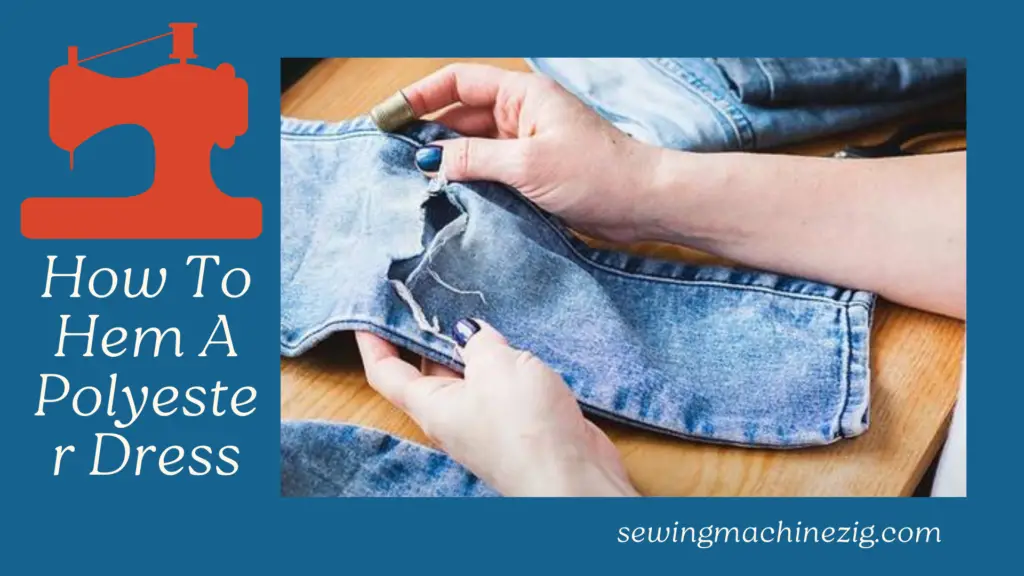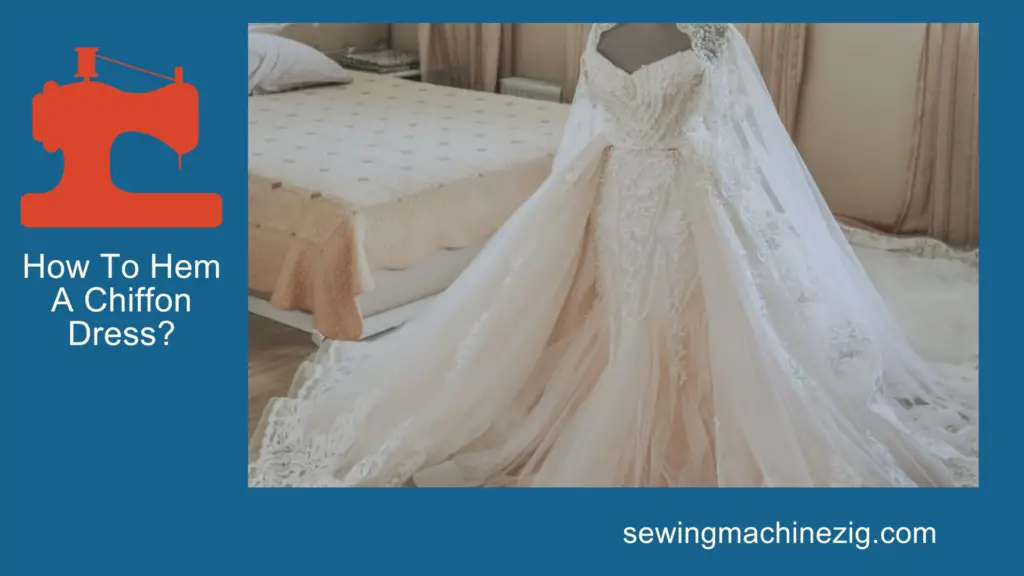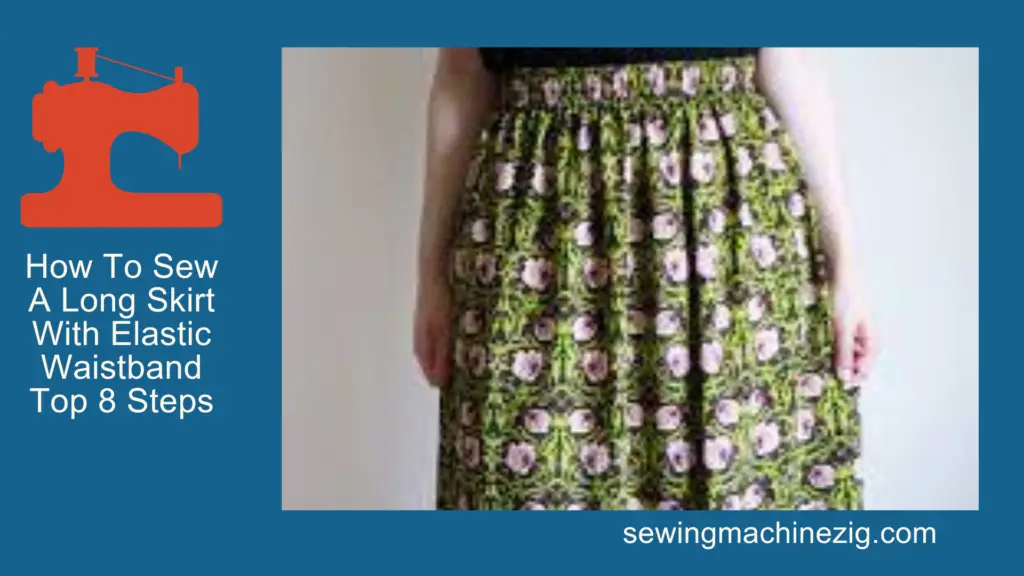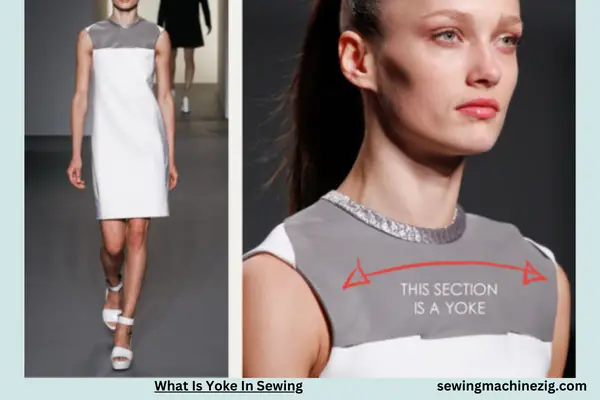
In the world of sewing, understanding the terminology and techniques is essential to mastering the craft. One such term that often piques curiosity is ” What Is Yoke In Sewing”.What exactly is a yoke in sewing, and how does it contribute to the construction of garments? A yoke is a critical component, often found in the upper part of shirts, blouses, and dresses, serving both functional and decorative purposes.
This guide will unravel the mystery of yokes in sewing, providing insights into their various types, uses, and the role they play in enhancing the fit and style of your creations. Let’s delve into the world of sewing and decode the significance of the yoke.
What Is Yoke In Sewing Detailed Answer
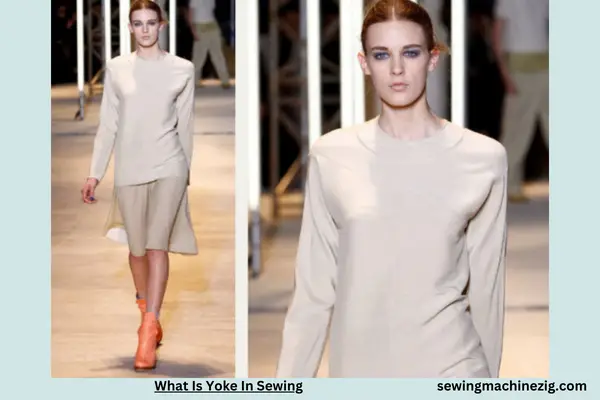
In the world of sewing, the term “yoke” refers to a critical element that plays a significant role in garment construction. Knowing “What Is Yoke In Sewing” is essential for anyone looking to create professional-looking clothing, whether for personal use or as a skilled seamstress.
This comprehensive guide will provide you with a step-by-step explanation of what a yoke is in sewing, its various types, and how to incorporate it into your sewing projects. Whether you’re a beginner or an experienced sewer, understanding the yoke is crucial for achieving well-fitted and stylish garments.
Step 1: Define the Yoke in Sewing
In sewing, a yoke is a shaped and fitted section of a garment that is typically found at the shoulders or the waist. It is designed to provide ease of movement, and structure, and is often a decorative element to the garment. Yokes can be functional, like in a yoked shirt, or purely decorative, as seen in yoke-style detailing.
Step 2: Types of Yokes
There are two primary types of yokes in sewing:
- Shoulder Yoke: This yoke is typically found at the top of a garment, such as a shirt or blouse. It spans the shoulders and upper back, creating a comfortable fit and often serving as a base for gathers, pleats, or decorative stitching.
- Waist Yoke: A waist yoke is positioned at the waistline of a garment, such as skirts, dresses, or trousers. It can be a separate piece attached to the garment’s lower part or integrated into the design as a fitted waistband.
Step 3: Functions of Yokes
Understanding the functions of yokes is crucial in garment construction:
- Shoulder Yoke: The shoulder yoke provides additional room for arm movement and gives structure to the upper part of a garment. It is often used to create a comfortable fit, especially in tailored shirts and dresses.
- Waist Yoke: Waist yokes can help in shaping the garment, providing a flattering silhouette. They are also used to support gathers, pleats, or darts, allowing for ease of movement and a secure fit.
Step 4: Drafting a Yoke Pattern
If you are creating a garment from scratch, you will need to draft a yoke pattern. Here’s a simplified approach:
- Measure the wearer’s shoulders or waist, depending on the type of yoke you are making.
- Determine the desired width of the yoke and sketch the yoke pattern, ensuring it matches the wearer’s measurements.
- Cut the yoke pattern from your fabric and mark any necessary seam allowances.
Step 5: Attaching the Yoke
To attach a yoke to a garment:
- Place the yoke right side together with the garment piece (shoulder or waist).
- Sew the yoke and garment piece together, ensuring the seam is secure and any gathers or pleats are evenly distributed.
- Finish the seam allowances as needed.
Step 6: Seam Finishing
For a professional finish, consider options like zigzag stitching, overlocking, or serging to prevent fraying and add durability to the seams.
Step 7: Pressing and Topstitching
Press the seam allowances toward the yoke and topstitch to secure the seam and create a polished look.
Step 8: Decorative Yoke Design
If desired, add decorative elements to the yoke, such as embroidery, lace, or decorative stitching. This enhances the visual appeal of the yoke and garment.
Step 9: Yoke Variations
Experiment with different yoke styles, such as gathered, pleated, or plain yokes, to achieve diverse design effects.
Step 10: Conclusion
Understanding “What Is Yoke In Sewing” is fundamental for creating well-fitted and stylish garments. Whether you’re sewing for fashion or function, the yoke plays a crucial role in the structure and aesthetics of your creations.
By following this step-by-step guide, you’ll be well-equipped to incorporate yokes into your sewing projects and elevate your sewing skills “What Is Yoke In Sewing”. Happy sewing!
Types Of Yoke In Clothing

In the realm of clothing design and construction, understanding the various types of yokes is fundamental for creating well-fitted, stylish, and functional garments. “Types Of Yoke in Clothing” encompasses a range of design elements that can significantly impact the fit and appearance of a garment.
This comprehensive guide will provide you with a step-by-step exploration of different yoke types, their characteristics, and how to incorporate them into your clothing designs. Whether you’re a fashion enthusiast, a budding designer, or a skilled seamstress, this guide will help you unlock the versatility of yokes in clothing.” What Is Yoke In Sewing”
Step 1: Define Yoke in Clothing
In clothing, a yoke is a shaped or fitted section that can be found in various parts of a garment, such as the shoulders, waist, or hips. Yokes serve both functional and aesthetic purposes, providing structure, enhancing fit, and often offering a canvas for decorative elements.
Step 2: Shoulder Yoke
Shoulder yokes are typically located at the upper back and shoulders of a garment. They can come in different styles:
- One-Piece Yoke: This style consists of a single piece of fabric that extends from the shoulder seam to the other shoulder seam. It’s common in shirts and blouses, providing a smooth and comfortable fit.
- Two-Piece Yoke: In this design, the yoke is divided into two pieces, often with a seam running across the upper back. Two-piece yokes are typical in button-down shirts and can enhance the garment’s structure.
Step 3: Waist Yoke
A waist yoke is positioned at the waistline of a garment. It can be a separate piece, an extension of the bodice, or even a fitted waistband. Waist yokes are versatile and can be styled in several ways:
- Dropped Waist Yoke: This style positions the yoke slightly below the natural waist, creating a dropped waistline. It’s a popular choice in dresses, especially those with a vintage or flapper-inspired design.
- High Waist Yoke: A high waist yoke sits above the natural waistline, accentuating the upper body, and is often used in skirts and dresses for a retro or feminine look.
Step 4: Hip Yoke
Hip yokes are placed at the hip area of the garment and can be used to control fullness and create a flattering silhouette:
- Fitted Hip Yoke: This type of yoke is designed to fit snugly at the hips, creating a tailored and structured look. It’s often found in pencil skirts and fitted dresses.
- Gathered Hip Yoke: A gathered hip yoke allows for added fullness and movement around the hip area. It’s commonly seen in bohemian-style dresses and skirts.
Step 5: Drafting Yoke Patterns
When creating garments with different yoke types, you’ll need to draft specific yoke patterns tailored to your design. You can do this by:
- Measuring the wearer’s body or the garment.
- Drafting a yoke pattern based on the measurements.
- Cutting the yoke pattern from your fabric, considering seam allowances.
Step 6: Attaching the Yoke
To attach the yoke to the garment:
- Place the yoke right side together with the garment piece (shoulder, waist, or hip).
- Sew the yoke and garment piece together, ensuring the seam is secure and any gathers, pleats, or darts are evenly distributed.
- Finish the seam allowances as needed.
Step 7: Seam Finishing and Topstitching
For a polished finish, consider seam finishing techniques such as zigzag stitching, overlocking, or serging to prevent fraying. You can also topstitch to secure the seam and enhance the garment’s appearance.
Step 8: Embellishments and Design
Embellish your yoke to add a touch of personality and style to your garment. This can include decorative stitching, embroidery, lace, or other design elements.
Step 9: Yoke Variations
Experiment with different yoke variations to create diverse design effects. Whether it’s a dropped waist yoke in a vintage dress or a fitted hip yoke in a tailored skirt, yokes offer countless design possibilities.
Step 10: Conclusion
Understanding “Types Of Yoke in Clothing” is a valuable skill for clothing designers and sewists alike. By exploring the various yoke types, you can enhance the fit, structure, and aesthetics of your garments.
Incorporate different yokes into your designs, and let your creativity shine in the world of clothing construction. Happy designing and sewing!” What Is Yoke In Sewing”
What Is A Yoke In Sewing A Skirt
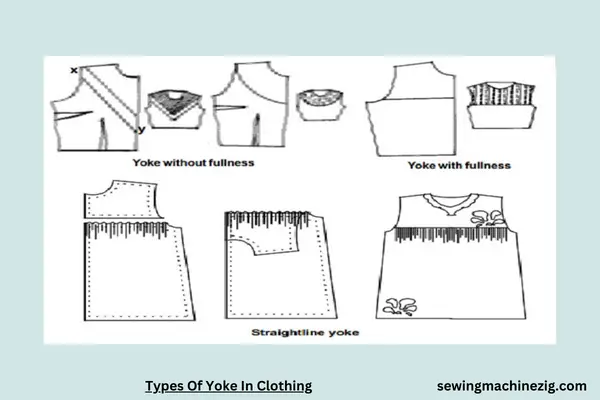
In the intricate world of sewing and garment construction, understanding the role of a yoke in sewing a skirt is crucial for creating well-fitting and stylish bottomwear. “What Is a Yoke in Sewing a Skirt” is a common question that often arises, especially among sewing enthusiasts and aspiring fashion designers.
In this comprehensive guide, we will provide a step-by-step explanation of what a yoke is in the context of sewing a skirt, its different types, and how to incorporate it into your skirt projects. Whether you’re a novice or an experienced sewer, grasping the concept of a yoke in skirt construction is vital for achieving a polished and professional look.
Step 1: Defining the Yoke in Skirt Sewing
In the context of sewing a skirt, a yoke is a fitted or shaped section of the garment that is usually located at the waist. It serves various functions, including enhancing the fit, providing structure, and contributing to the overall design and aesthetics of the skirt.
Step 2: Understanding the Role of a Yoke
A yoke in a skirt can be both functional and decorative. It offers the following benefits:
- Fit Enhancement: The yoke helps to ensure that the skirt fits snugly at the waist, creating a flattering silhouette.
- Structural Support: It provides stability and structure to the waist area, allowing the skirt to maintain its shape and drape effectively.
- Design Element: Yokes in skirts can be designed to add visual interest, such as contrasting fabrics, embellishments, or unique shapes.
Step 3: Types of Yokes in Skirt Sewing
There are several types of yokes you can consider when sewing a skirt:
- Straight Yoke: A straight yoke runs horizontally across the waist and is a common choice for many skirt styles. It provides a simple and clean look.
- Curved Yoke: A curved yoke follows the natural contours of the body, which can be particularly flattering. It is often used in fitted and A-line skirts.
- Contrasting Yoke: Using a contrasting fabric or color for the yoke can create a visually striking effect, making the yoke a design focal point.
Step 4: Drafting a Yoke Pattern
To create a skirt with a yoke, you’ll need to draft a yoke pattern. Here’s a simplified process:
- Measure the wearer’s waist or the intended waistline of the skirt.
- Based on the measurements, draft a yoke pattern that corresponds to the skirt’s waist. Ensure the pattern includes seam allowances.
Step 5: Attaching the Yoke
To attach the yoke to the skirt:
- Place the yoke right sides together with the skirt’s waist.
- Sew the yoke and skirt together, ensuring that the seam is secure and any darts or pleats are evenly distributed.
- Finish the seam allowances as needed.
Step 6: Seam Finishing and Topstitching
To achieve a professional finish, consider seam finishing techniques like zigzag stitching, overlocking, or serging to prevent fraying. Topstitching can be added for both reinforcement and decorative purposes.
Step 7: Design and Embellishments
Enhance the yoke with design elements such as decorative stitching, embroidery, lace, or fabric manipulation. Personalizing the yoke can add a unique touch to your skirt.
Step 8: Yoke Variations
Experiment with different yoke variations to create diverse design effects in your skirts. Whether it’s a contrasting yoke in a bohemian-style skirt or a curved yoke in a tailored A-line skirt, yokes offer endless design possibilities.
Step 9: Conclusion
Understanding “What Is a Yoke in Sewing a Skirt” is a fundamental skill for any sewing enthusiast or aspiring fashion designer. By incorporating different yokes into your skirt projects, you can enhance fit, structure, and style, creating garments that stand out. Embrace the versatility of yokes, and let your creativity shine in the world of skirt construction. Happy sewing!
Conclusion
In conclusion, understanding “What Is Yoke In Sewing” is an essential foundation for mastering garment construction and design. Whether you’re sewing a skirt, shirt, or any other clothing piece, the yoke plays a pivotal role in enhancing fit, providing structure, and contributing to the overall aesthetics of your creations.
By comprehending What Is Yoke In Sewing and the diverse types of yokes and how to incorporate them into your sewing projects, you unlock a world of creative possibilities. Embrace the art of yoke sewing, and you’ll be well on your way to crafting garments that are both stylish and well-fitted. Happy sewing!
FAQS
Q1: What is a yoke in sewing, and where is it typically used in garment construction?
A1: In sewing, a yoke is a fitted or shaped section of a garment. It’s commonly used at various points in garment construction, such as the shoulders, waist, or hips, to provide structure, enhance fit, and contribute to the overall design.”What Is Yoke In Sewing“
Q2: What are the primary functions of a yoke in sewing, and why is it important?
A2: Yokes in sewing serve multiple functions. They enhance the fit of a garment, offering a snug, flattering silhouette. Yokes also provide structural support, helping the garment maintain its shape and drape effectively. Additionally, they can serve as a design element, allowing for visual interest and creativity.””What Is Yoke In Sewing
Q3: What are the different types of yokes used in clothing, and where are they typically found?
A3: Various types of yokes are used in clothing, including shoulder yokes, waist yokes, and hip yokes. Shoulder yokes are typically found in blouses and shirts. Waist yokes can be used in dresses and skirts. Hip yokes are often seen in skirts and dresses.“What Is Yoke In Sewing“
Q4: How can I draft a yoke pattern for my sewing project, and what are the key steps to follow?
A4: To draft a yoke pattern for your sewing project, measure the wearer or the intended garment, then create a pattern based on those measurements. Ensure that the pattern includes seam allowances. This process is essential for achieving a well-fitted yoke.“What Is Yoke In Sewing“
Q5: Are there any variations or embellishments I can add to yokes to enhance the design of my clothing projects?
A5: Yes, you can experiment with various yoke variations, such as straight, curved, or contrasting yokes, to create different design effects. Additionally, you can embellish yokes with decorative stitching, embroidery, lace, or unique fabric choices to add a personalized touch to your clothing projects.

